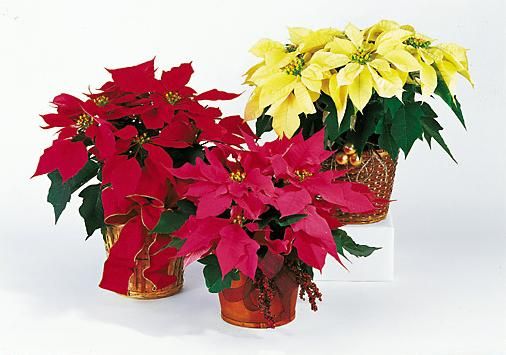 Cheerful and bright color plays a very important part in our social lives at this time of year, which we instinctively try to cultivate and enhance our indoor environment through plants or artificial decoration. Silver and gold colors certainly for their effervescent qualities that appear to brighten up even the darkest corner outside or indoors. Greenery through wreaths, bowers or even container plantings brings a sense of ongoing life at a time when plants shed their leaves through winter dormancy. Then there is red, a seasonal fall experience we rarely see through falling leaves in our part of the Upper Gulf Coast. A popular plant that we value as indoor plantings for their unique and bold red color is Poinsettia (Euphorbia pulcherrima).
Cheerful and bright color plays a very important part in our social lives at this time of year, which we instinctively try to cultivate and enhance our indoor environment through plants or artificial decoration. Silver and gold colors certainly for their effervescent qualities that appear to brighten up even the darkest corner outside or indoors. Greenery through wreaths, bowers or even container plantings brings a sense of ongoing life at a time when plants shed their leaves through winter dormancy. Then there is red, a seasonal fall experience we rarely see through falling leaves in our part of the Upper Gulf Coast. A popular plant that we value as indoor plantings for their unique and bold red color is Poinsettia (Euphorbia pulcherrima).
Poinsettia are a very interesting species because of their showy vegetation. They are native to parts of southern Mexico to Guatemala in tropical, deciduous forests. The plant common name in Mexico is Nochebuena or Flor de Nochebuena, attributed to seasonal Christmas celebrations. The common name given through markets in the states is attributed to the first U.S. Ambassador to Mexico Joel Robert Poinsett, who introduced the species in 1825. There is a related species native to Texas and the ‘lower 48’ called Wild Poinsettia or Fire on the Mountain (Euphorbia cyathophora). This species produces a blotchy and non-uniform red color at the base of each leaf in the fall.
What we think of as showy leaves are modified leaves called bracts that surround clusters of urn-shaped, yellow colored flowers. In their natural habitat, Poinsettia can grow into a shrub reaching 10 to 15-feet tall. They are temperate tropical plants and perform best at temps that average 70-degrees during the day and 60-degrees at night. They will lose their vegetation if exposed to temperatures below 50-degrees and may exhibit signs of stress at temps above 80-degrees. Because of this sensitivity, it is best to grow Poinsettia in containers for relocation during cold winter and blistering hot summer months. Container soil should be well-draining; Poinsettia is susceptible to root and stem rot if kept in saturated soil. Even though the plants thrive with more light exposure, provide afternoon shade during our commonly hot summer months.
Poinsettia are members of the spurge family (Euphorbiacaea), a plant family known for expressing a sticky milky sap when cutting stems or leaves. This milky sap can cause skin irritation for some people susceptible to skin allergies and may cause symptoms such as mild irritation to nausea and diarrhea if ingested by pets. While the plant is not considered poisonous, always use common sense when placing plants at indoor or outdoor settings and proximity to pet traffic and habit.
Let’s talk color: there is estimated to be more than 100 varieties hybridized to produce colors that range from deep red to salmon, apricot to yellow, and cream to white. There are also a few that exhibit white speckled variegation to attract our wandering eyes. Remember that the colored vegetation are bracts that subtend the flowers. Nurserymen use natural phenomenon of less sunlight exposure in the fall to initiate flowering and produce this change in bract color. Poinsettia are considered short-day plants, meaning that flower buds form when the plants are kept in 14 hours of total darkness out of every day for a four-week period. This activity is best started in late September or early October to get the bracts to change color in time for our holiday celebration.
Consider the beauty and diversity of color that Poinsettia provides during your holiday festivities and celebration. As always, keep your gardens beautiful, support Brazoria County AgriLife Extension programs and I’ll see you in the garden.
